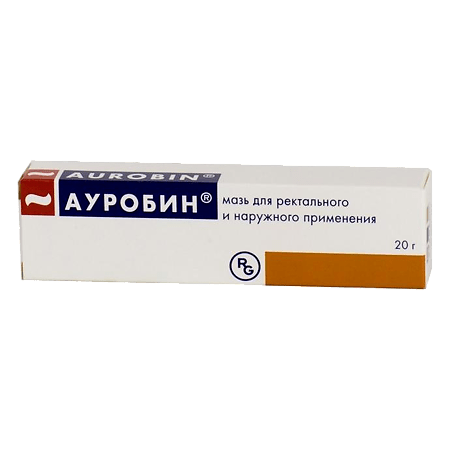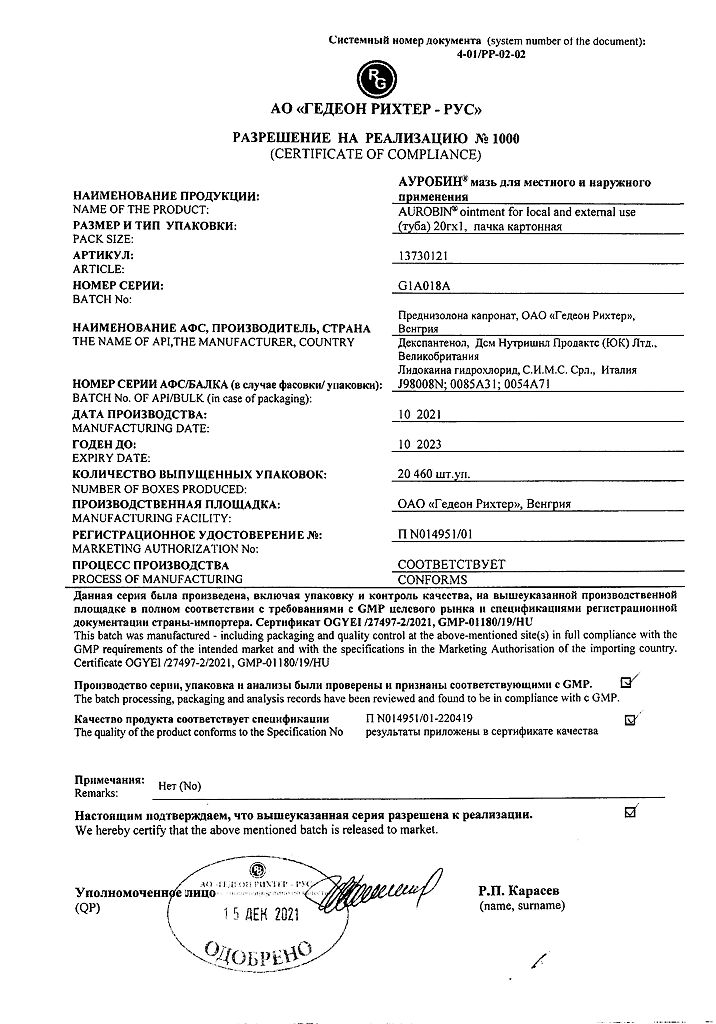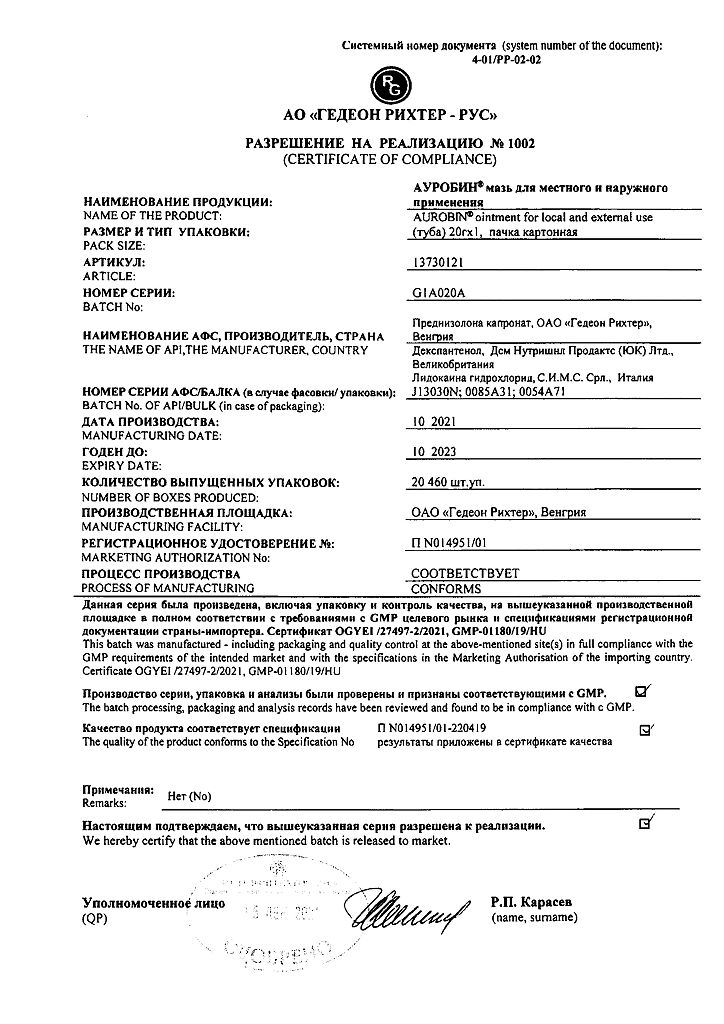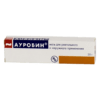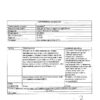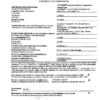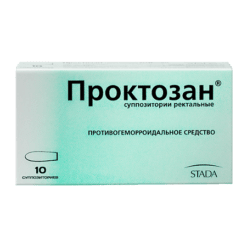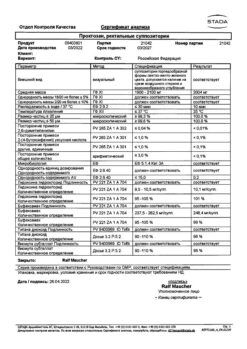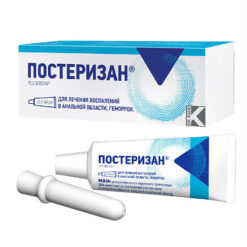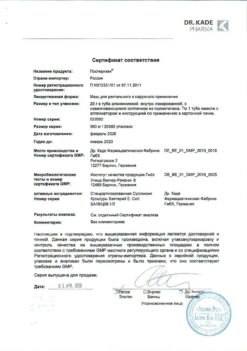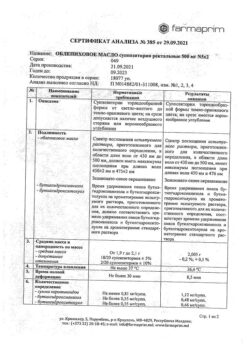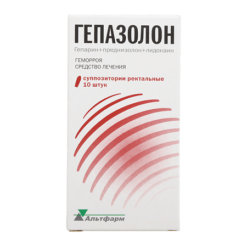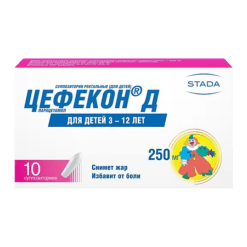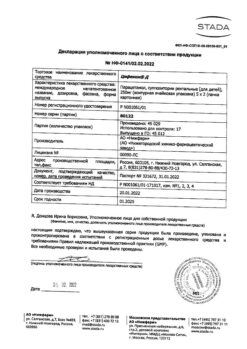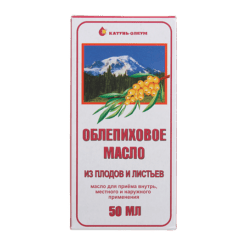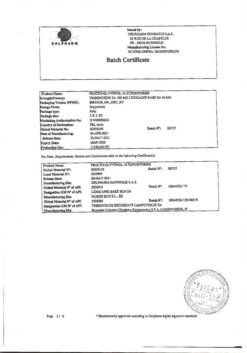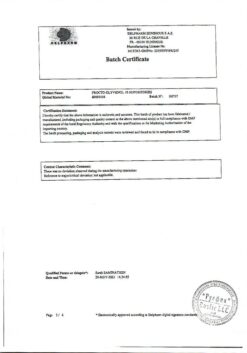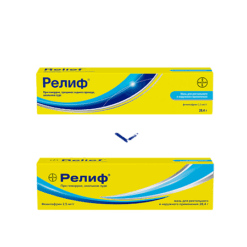No products in the cart.
Description
Anal itching, Anal fissures, Skin lesions, HemorrhoidsProcesses accompanied by perianal inflammation, anal itching, eczema and dermatitis of the perianal area, fissures, hemorrhoids, anal fistula.
Indications
Indications
The drug Aurobin® is used for the local treatment of inflammatory diseases in the perianal area (anal area), including anal itching, perianal eczema and dermatitis, hemorrhoids, anal fissures, in adults and children over the age of 1 year.
Pharmacological effect
Pharmacological effect
Pharmacotherapeutic group: Angioprotectors; products for the treatment of hemorrhoids and anal fissures for topical use; corticosteroids
Pharmacological action
Combined drug for the treatment of inflammatory diseases of the perianal area.
Prednisolone capronate is a non-halogenated glucocorticoid. It has a local anti-inflammatory effect, and also reduces vascular permeability, increases the tone of the vascular walls and reduces the symptoms of inflammation.
Lidocaine is a local anesthetic that quickly eliminates pain and burning sensation.
Dexpanthenol – promotes the regeneration of damaged epithelium and mucous membrane.
Pharmacokinetics
No pharmacokinetic studies have been conducted.
Special instructions
Special instructions
Special instructions
If skin irritation or tenderness occurs, treatment should be discontinued immediately and appropriate supportive care should be instituted.
Local and systemic toxic effects can be prevented by avoiding applying the ointment to large or damaged areas of skin, skin folds, under occlusive dressings and/or for long periods of time.
At the site of application of the drug Aurobin, especially in young patients, skin atrophy may develop with prolonged use. In case of fungal or bacterial infections, appropriate local or systemic treatment is necessary.
The use of the drug requires increased caution in patients with diabetes mellitus, tuberculosis and anemia, as well as in pediatric patients due to the possibility of suppression of the hypothalamic-pituitary-adrenal system under the influence of the glucocorticosteroid included in the drug.
Visual impairment
Visual impairment may occur during the use of local and systemic glucocorticosteroids. If blurred vision or other visual disturbances occur, the patient should be referred to an ophthalmologist to evaluate possible causes, which may include cataracts, glaucoma, or rare diseases such as central serous chorioretinopathy (CSC). The listed diseases can occur after the use of local and systemic glucocorticosteroids.
Excipients
The drug Aurobin contains methyl parahydroxybenzoate (E218), cetyl alcohol and propylene glycol (E1520) as excipients.
Methyl parahydroxybenzoate (a substance also known as paraben) can cause allergic reactions (including delayed ones). Cetyl alcohol may cause local skin reactions (eg contact dermatitis). Propylene glycol may irritate the skin.
Impact on the ability to drive vehicles and operate machinery
There is no data on the effect of Aurobin on the ability to drive vehicles or work in conditions requiring increased attention.
Active ingredient
Active ingredient
Dexpanthenol, Prednisolone, Lidocaine
Composition
Composition
Active substances
lidocaine
dexpanthenol
prednisolone
Excipients: polysorbate 60, triclosan, methyl parahydroxybenzoate (E218), cetyl alcohol, glycerol, propylene glycol (E1520), liquid paraffin, macrogol stearate, dimethicone, medium chain triglycerides, stearic acid, purified water.
Pregnancy
Pregnancy
Pregnancy
There is insufficient data on the safe use of the drug in pregnant women, therefore the drug should not be used in the first trimester of pregnancy. In the second and third trimesters of pregnancy, when prescribing the drug, the benefit-risk ratio must be carefully assessed. Topical corticosteroids used in pregnant women may cause fetal harm (eg, cleft palate and intrauterine malformations).
Lactation
Glucocorticosteroids and lidocaine pass into breast milk. Glucocorticosteroids may affect adrenal function in newborns and may lead to developmental disorders. Small amounts of lidocaine are found in breast milk. The use of the drug is contraindicated during breastfeeding.
Contraindications
Contraindications
Do not use Aurobin®:
– If you or your child are allergic to prednisolone capronate, lidocaine hydrochloride, dexpanthenol or any other components of the drug listed in section 6 of the leaflet.
– If you or your child have hypersensitivity to other amide local anesthetics (bupivacaine, etidocaine, mepivacaine and prilocaine).
– For the treatment of any of the following skin conditions:
· acne (acne vulgaris)
· rosacea (facial rosacea)
Lesions around the mouth (perioral dermatitis)
· diaper rash
· skin manifestations of tuberculosis
· skin manifestations of syphilis
· dry, fine-plate peeling of the skin.
– Do not apply ointment in the eye area or around the eyes.
– If you or your child have bacterial, viral (for example, herpes simplex) or fungal skin infections.
– If you or your child are already using lidocaine for other indications.
– If your child is under 1 year old.
– In the first 3 months (first trimester) of pregnancy (see section “Pregnancy and breastfeeding”).
– If you are breastfeeding (see section “Pregnancy and breastfeeding”).
Side Effects
Side Effects
Like all medicines, Aurobin® can cause side effects, although not everyone gets them.
Local use of steroid drugs can lead to local adverse reactions, but the use of ointment under an occlusive dressing increases the risk of their occurrence. Long-term use can lead to hormonal changes, skin atrophy, hair growth and the appearance of stripes on the skin (striae). If you notice these or other unusual symptoms or complaints, consult your doctor immediately.
Allergic reactions can occur when using any drug, including Aurobin® ointment. Methyl parahydroxybenzoate (so-called paraben) and cetyl alcohol included in the composition can cause dermatitis in patients sensitive to them; propylene glycol may cause skin irritation. Likewise, the active ingredients and other excipients may also cause allergic reactions. Stop using the drug and call your doctor immediately if you experience symptoms such as skin redness, rash, itching, or swelling.
Depending on the amount of glucocorticosteroid and lidocaine absorbed through the skin, systemic effects may develop.
The incidence of adverse reactions has not been established (cannot be determined based on available data).
Also contact your doctor if you notice any changes in your condition compared to what it was before you started treatment, or if you experience any of the following unwanted reactions:
System effects
Generalized (systemic) adverse reactions rarely develop with topical use of the drug, but they can be very serious.
The risk of developing systemic adverse reactions increases with:
applying ointment under an occlusive dressing (for example, film) and/or over a large area of skin
when used in children (their skin is thin and has a large area relative to body weight, which makes children very susceptible to the drug)
Infections
exacerbation of latent infectious diseases
masking infectious diseases
infections caused by pathogens that do not usually cause illness in healthy people (opportunistic infections)
Endocrine disorders
suppression of the function of the adrenal cortex, which can be manifested by symptoms such as weakness, fatigue, poor appetite, decreased blood pressure, increased heart rate, nausea, vomiting, stool disorders, etc.
Metabolic and nutritional disorders
decrease in protein content in the body
changes in laboratory blood tests – a decrease in potassium levels in the blood (hypokalemia), sometimes leading to a change in the acid-base balance in the body (hypokalemic alkalosis)
increase in salt and water content in the body, fluid retention
Nervous system and mental disorders
insomnia
mental disorders
convulsions
dizziness
headache
increased intracranial pressure, which can be manifested by symptoms such as periodic headaches of varying intensity, irritability, deterioration of attention, nausea, etc.
Eye disorders
blurred vision
detected during instrumental examination:
clouding of the lens of the eye (cataract)
bulging eyes (exophthalmos)
increased intraocular pressure (glaucoma)
papilledema
corneal ulcer
abnormalities of the retinal choroid (chorioretinopathy)
Disorders of the heart and blood vessels
heart failure
cardiac conduction disorders
high blood pressure (hypertension)
peripheral vasodilation
Gastrointestinal disorders
perforation or bleeding in the stomach or intestines
inflammation of the esophagus (esophagitis)
inflammation of the pancreas (pancreatitis)
ulcer of the stomach and intestinal mucosa
Skin disorders
skin irritation or inflammation (dermatitis)
inflammation of the hair follicles at the site of application (folliculitis)
acne-like rashes
inflammation of the area of skin where the drug was applied (contact dermatitis)
dry skin
skin redness
hives
increased hair growth
increased sweating
soreness and inflammation in skin folds
itchy skin
thinning of the skin (atrophy)
skin discoloration (hypopigmentation)
appearance of stripes on the skin (striae)
dilation of small vessels located close to the surface of the skin (telangiectasia)
burning sensation of the skin
delayed reaction to skin testing
delayed wound healing
Bone and muscle disorders
muscle pain (steroid myopathy)
destruction of bone tissue (osteonecrosis)
thinning of bone tissue (osteoporosis).
Additional adverse reactions observed in children and adolescents
Children are at higher risk of developing cataracts. Children may experience slower growth. Long-term use of the drug or use on large areas of the skin can lead to hormonal changes (suppression of adrenal function), which is especially common in children and when the drug is applied to the skin under an occlusive dressing.
Interaction
Interaction
Tell your doctor if you are taking, have recently taken, or may start taking any other medications.
In particular, tell your doctor if you are taking medications to treat irregular heart rhythms (antiarrhythmic drugs).
Do not use Aurobin® while using lidocaine for other indications.
Overdose
Overdose
Long-term use of the drug on large areas of the skin, or on skin folds, or under an occlusive dressing can lead to an overdose and, as a consequence, to the development of local and general reactions. In this case, contact your doctor immediately.
Depending on the amount of glucocorticosteroid or lidocaine absorbed, local and general reactions may develop.
There is no specific antidote; maintenance therapy must be used.
Storage conditions
Storage conditions
Store at a temperature of 8 to 15 °C
Shelf life
Shelf life
2 years.
Manufacturer
Manufacturer
Gedeon Richter, Hungary
Additional information
| Shelf life | 2 years. |
|---|---|
| Conditions of storage | Store at 8 to 15 ° C out of the reach of children. |
| Manufacturer | Gedeon Richter, Hungary |
| Medication form | topical ointment |
| Brand | Gedeon Richter |
Related products
Buy Aurobin, ointment 20 g with delivery to USA, UK, Europe and over 120 other countries.

